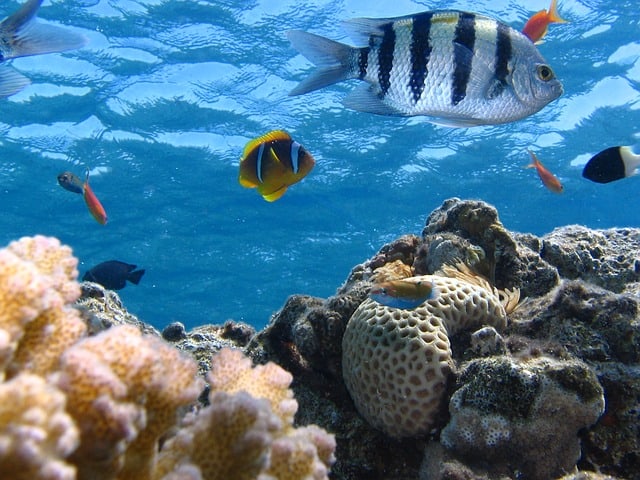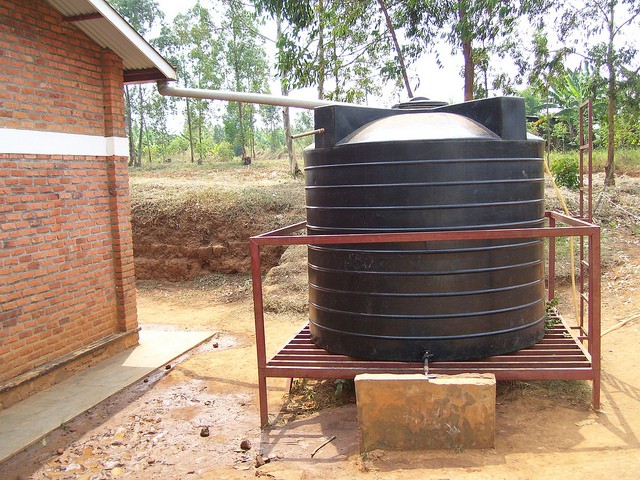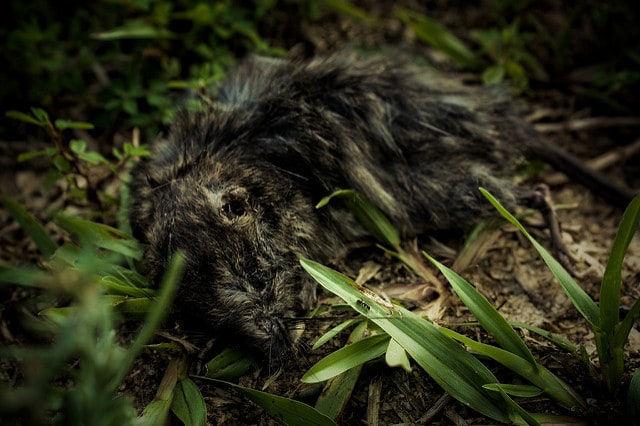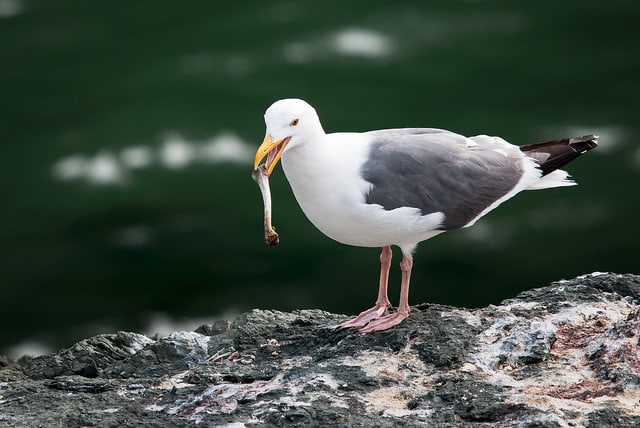What is an Ecosystem? Structure and Types of Ecosystem

An ecosystem is a community of plants and animals interrelating with each other in a particular area, as well as with their non-living environments. The non-living environments encompass atmosphere, weather, sun, soil, and climate. An ecosystem can be expansive, with several hundreds of different flora and fauna all living with a delicate balance, or it can be fairly small.
Let’s have a deeper look at ecosystem and its related components.
Structure of Ecosystem
The structure of an ecosystem is essentially a description of an environment’s organisms and physical features. This includes the amount and distribution of energy in the environment. Moreover, the structure of ecosystem provides information on various climatic conditions prevailing in the environment. It is described under two major headings:
- Abiotic components
- Biotic components
Let’s have a detailed look at this.
What are Abiotic Components?
Abiotic components of an ecosystem include basic inorganic elements and compounds such as water, air, soil, phosphates, calcium carbonates, and various organic compounds, which are usually by-products of organic activities.
Abiotic components also encompass physical factors and elements such as solar radiation, wind currents, and moisture. It is also worth noting that the sun’s radiant energy is the only significant source of energy for an ecosystem.
What are Biotic Components?
The biotic components encompass all living organisms present in an ecosystem, and they fall under any of the following three categories:
- Producers or Autotrophic components
- Consumers
- Decomposers and transformers
How are these three levels of biotic components related?
Producers, which are largely green plants, draw energy from the sun through the process known as photosynthesis. The energy subsequently flows across the food chain to the consumers, which are largely animals. The consumers feed on the captured energy.
At the bottom of the food chain, we have decomposers, also known as reducers. Waste products and dead tissues are generated at all levels of the ecosystem structure. Besides feeding on these waste products and dead tissues, decomposers also break down organic matter back to its organic components.
Then, microbes finalize the decomposition work and generate organic components that can again be utilized by producers. The microbes include the bacteria and fungi and are an integral component of the food cycle.
It is worth noting that energy that flows from producers to consumers to decomposers is normally inefficient. As such, less energy is available at the level of secondary consumers (carnivores) compared to the level of primary producers (green plants). Also worth mentioning is that amount of energy generated from place to place varies significantly owing to the amount of solar radiation as well as the availability of water and nutrients.
Types of Ecosystem
There are basically three types of ecosystems under which any other sub-ecosystem falls. They are:
- Terrestrial Ecosystem
- Freshwater Ecosystem
- Ocean Ecosystem
Let’s have a deeper look at each of the ecosystems.
Terrestrial Ecosystems
In light of the fact that there are numerous different kinds of places on Earth, terrestrial ecosystems are many. Shall we explore some of the most common terrestrial ecosystems you can come across?
1. The Forest Ecosystems
In forest ecosystems, a massive number of organisms can live in fairly small space. These are ecosystems in which you find a lot of flora. It suffices to say that the density of living organisms in forest ecosystems is pretty high.
A slight change in forest ecosystem can affect the entire balance, effectively killing the whole ecosystem. These ecosystems also feature a wide range of fauna. They can further be divided into Tropical evergreen forest, Tropical deciduous forest, temperate evergreen forest, temperate deciduous forest, and Taig.
2. The Desert Ecosystem
Desert ecosystems fall within regions that receive an annual rainfall not more than 25mm. The Earth is made of about 17 percent desert ecosystem. These ecosystems are characterized by intense sunlight, extremely high temperature, and low availability of water. What does this mean?
Flora and fauna are not only rare but also poorly developed. The plants feature stems and leaves that are modified in a bid to conserve as much water as possible. For instance, some common desert plants have succulent stems to store water, such as the spiny-leafed cactus.
Animals in this ecosystem are also adapted to various conditions that prevail in desert environments. The animals include reptiles, camels, birds, and insects.
3. The Grassland Ecosystem
Grassland ecosystems can be found in both the temperate and tropical regions across the globe, but with slight variations. These ecosystems mainly comprise grasses with a few trees and shrubs. Grasses are the main vegetation here, along with legumes, which belong to the composite family.
Grassland ecosystem is also home to a variety of grazing animals, herbivores, and insectivores. This ecosystem is further divided into savanna and prairies ecosystems.
4. The Mountain Ecosystem
Mountain land offers a dispersed and diverse range of habitats where various plants and animals can be found. The higher altitudes are characterized by harsh environmental conditions, which can only support the lives of treeless alpine vegetation. The animals found in this habitat have thick fur coats, which protect them from cold. At the lower slopes of the mountain environment, we mostly have coniferous forests.
Freshwater Ecosystems
As the title suggests, freshwater ecosystems encompass freshwater environments and are divided into three basic categories:
- Lentic, which includes slow-moving or still water such as lakes, ponds, and pools.
- Lotic, which includes fast-moving water like rivers and streams.
- Wetlands, which include environments where the soil is saturated with water for a considerable period of time.
It is worth noting that freshwater ecosystems account for only 1.8 percent of the Earth’s surface total, which makes it the smallest of the three main types of ecosystems. This ecosystem encompasses relatively small fish, amphibians, a variety of insects, as well as plants.
Plankton is certainly the smallest living element of the food web in freshwater ecosystems. It is a tiny organism that is normally eaten by fish and other little creatures.
Oceanic Ecosystems
Covering about 71 percent of Earth’s surface and containing about 97 percent of all the Earth’s water, ocean ecosystem is certainly the largest ecosystem. Water in this ecosystem is characterized by high amounts of dissolved salts and minerals.
Oceanic or marine ecosystems are divided into three main categories: the deep waters, shallow waters, and the deep ocean surface. Just like in freshwater ecosystems, the plankton is the basis of the oceanic ecosystem’s food chain. In fact, the plankton and other plants that grow in marine ecosystem account for about 40 percent of all photosynthesis that takes place on Earth.
There is a vast variety of organisms that live in oceanic ecosystems. These organisms include the corals, the brown algae, echinoderms, cephalopods, sharks, and dinoflagellates.
Bottom Line
Living organisms cannot survive when separated from their non-living environments. This is because the non-living environments provide resources and energy for the survival of living organisms. Namely, there is an interrelationship between a biotic community and its environment geared to create a stable system – a natural self-sustaining unit that is called an ecosystem. Ecosystems are of three major types, and all of them have to comprise both biotic and abiotic components, the interactions, as well as a known source of energy.






